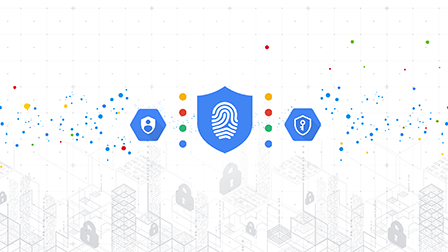Blog
5 Things to Know About Cloud Security in 2023

As the rise of technologies like artificial intelligence, the Internet of Things (IoT), and hybrid and remote work environments drive more organizations to the cloud—and as cyberattacks continue to threaten businesses—the spotlight on cloud security is brighter than ever.
Moving into 2023, these factors and more are bringing heightened attention to securing data in cloud environments. Here’s a peek into what organizations should consider in the coming year.
1. Automation requires a close look at cloud security.
As more organizations adopt automation, the volume of data sent to the cloud is compounding. As a result, companies should consider automating cloud security as part of their strategy as they deploy solutions. Automating the cloud security process helps organizations gain the insight they need to secure their cloud environments and enables them to focus on innovation.
2. A zero-trust approach is necessary for remote environments.
Most corporate networks today are complex: They contain cloud services and infrastructure, IoT devices, and as a result of the pandemic, more remote and mobile environments. Organizations must securely enable access to the resources employees need from a variety of devices, which is why many are turning to a zero-trust framework.
The zero-trust security framework calls for all users—both inside and outside the organization’s network—to be authenticated before accessing its applications and data. A zero-trust framework reduces the attack surface, helps to protect modern environments, and enables digital transformation through strong authentication methods.
Powered by AMD EPYC processors, Google Cloud's N2D and C2D confidential virtual machines enable secure development in the cloud with end-to-end encryption.
3. Confidential Computing will drive secure collaboration.
For organizations with highly sensitive or regulated data, the rise of Confidential Computing can prove transformational. The technology, which protects data in use with secure and isolated environments on hardware, prevents unauthorized access and the modification of applications and data. Its resources such as encryption keys are otherwise invisible, remaining undiscoverable by any program, person, or cloud provider.
Because Confidential Computing enables organizations to extend cloud computing to all workloads without concern for their security, companies can easily collaborate with partners on sensitive and regulated data in the cloud, all while preserving confidentiality and securely sharing only the data they want.
4. Open security architecture grows across cloud providers.
As cloud providers look to support more modern workloads, the movement toward open collaboration—in instances like the Caliptra project, for example—will help support collaboration in cloud environments.
Caliptra, which was established by Google, NVIDIA, Microsoft, and AMD, builds security layers into chips to enable the encryption of data as it travels in data centers or the cloud. Caliptra provides a common language for chip makers and cloud providers to create technologies around Confidential Computing to provide more secure environments across cloud providers.
5. Multicloud strategies will expand.
While hybrid cloud strategies reigned in 2022, more organizations are considering diversifying their cloud services across multiple providers. A multicloud approach has a number of advantages for organizations, including reduced costs, better service delivery, meeting compliance requirements, increased performance, and improved flexibility and scalability. A multicloud strategy can further improve security by enabling enhanced resilience, improved disaster recovery, and better failover options that reduce downtime.
Learn more about how organizations can fortify cloud security in the coming year. Visit the Google Cloud Security blog.
Author:
Kristin Burnham
is a reporter and editor covering IT leadership, business technology, and online privacy and security.
Author:
Kristin Burnham
is a reporter and editor covering IT leadership, business technology, and online privacy and security.








